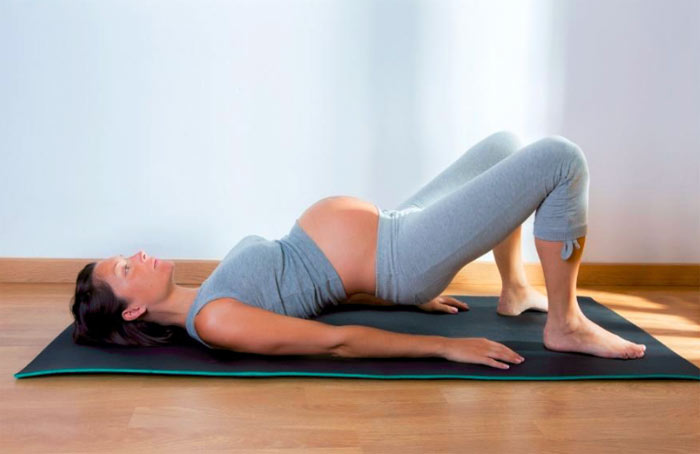Postpartum Weight Loss Tips
Your exercising has to start as soon as possible, the first month being most important – although your life is now a fast-rushing current of urgent washing, feeding every three hours, and tending to the painful nipples. Maybe you just can’t squeeze in any exercising – if so, more’s the pity. But if you are of those mothers who are anxious to “bounce back,” you will be struggling hard to drop the baby weight and go back to your previous body – even if you find it hard to allow time for it.
The thing is, whether to exercise or not is a really moot issue.
Every kind of training, when you come to it, is – or must be – strictly individual. The same goes for postpartum training, even more so. Many factors have to be taken into account, like whether the birth was natural or via C-section; it is important to know if the birth was aggravated by complications, and what type of complications.
Right from the start
Once you have consulted with your doctor and are ready to take the plunge, generally you are supposed, to begin with, some stretching, strengthening exercises for the abdominal muscles and the pelvis, and the easiest cardio stuff. You can do kegels and arrange walks. During the first six weeks or so – no running, no kickboxing or skipping, absolutely. If you can do it together with the baby, it’s even better – combine your kegels with breastfeeding or take walks pushing the pram.
While the baby is fast asleep is a good time to stand up and give yourself a good stretch. If you have time, go outside an use some meditative breathing, it can go a long way to helping you relax and tune in to a positive frame of mind for the rest of the day.
Other experts hold that during this initial period the body adjusts to a new kind of life and the baby’s requirements, so it would be preferable to refrain from exercising that could be strenuous for the first month or two. It could be enough just to sit down calmly for a while and ruminate on quietude and joys of matrimony.
If you are ready to get working on your body, the first thing that requires your attention would be the pelvic floor. Exercises for strengthening it could be commenced from the first week. They require no special approach, you can simply imagine you are trying to hold in pee by drawing your lower abdomen muscles up and in. You can go along with the baby’s age for convenience. During the first week, you do one-second hold-ins 10 times. In a week you do 10 two-second hold-ins, and you go on like this for ten weeks.
With the doctor’s clearance, you can begin strengthening your pelvic floor when feeding the baby.
If you contemplate sadly how your belly has changed and are eager to get down to crunches to set things right, halt. You know what your stomach has come through a hard time, and it needs rest before you start working on it. Consider such factors as the occurrence of rectus diastasis (it is the splitting of the abdominal muscles as the baby grows) and the extent of it. So you have to go carefully about your midsection, meaning do without sit-ups and crunches; instead, go for shoulder raises and heel slides. Pre and postnatal pilates can also be helpful if the doctor agrees.
The first half-year
Now that you put the first month or two behind, you may feel better, having somewhat adjusted yourself to the situation. On the other hand, it may not happen. In this case, you may have taken too little care of your body. Do you exercise regularly? Take walks in the open air?
By this time you can do yourself a lot better: take some minutes off, get your mind on the body and do postnatal pilates, barre attack or go for swimming. If everything goes right, you can regain your shapely body after about six-seven months’ three sessions per week. Probably the most realistic timespan for restoring your energy will be under 18 months. Anyway, whatever exercise you manage to put in, congratulate yourself on helping your body even if it only comes to one or two weekly classes.
But hold on to reality – you have to reach your previous condition first. It depends upon your lifestyle before the birth – whether you led an athletically active life and you have a solid foundation for exercising, or your life was of a sedentary kind and you shouldn’t overexert yourself. The latter can use birth as a motivation to give their body the exercising it has always needed, while the former can get down to serious training after the first six weeks. There were even cases when women had done weight lifting before and were able to return to their practice after a month’s break. Of course, sportive women had to resume their workouts modified to their condition.
Since posture has been suffering during pregnancy, you will need stretching and strengthening the back. Generally, the best bet would be some strength exercises combined with modified cardio. You can throw in some aerobics. Those concerned about their extra fat should get into power walking.
All this exercising isn’t only important for the body – it is highly beneficial for mental health as well. You want to be mentally strong so as not to yield to postpartum depression and move about your daily routine with enviable efficiency.
One more advice from experts: treat yourself gently. Let go of pressures that may arise from your being penned in and devoid of your social activity; for the present, the main thing is to keep yourself happy. Say you failed at making yourself work out for various reasons; take up some occupation that will bring in the need for activity, make sure you eat healthy food.
You spent over 9 months on getting birth to a wonderful baby that is your own marvelous creation. You will need about the same amount of time to restore your energy, shape, and health. Remind yourself that you have been amazing and now your body and spirit need some care.




